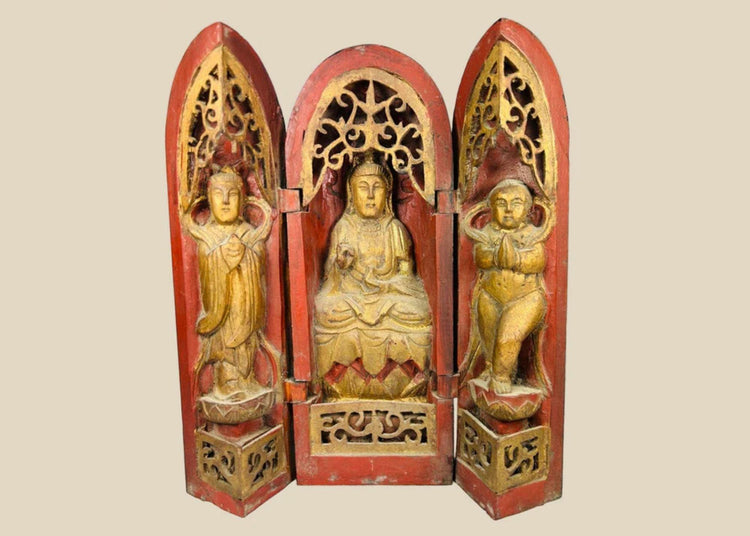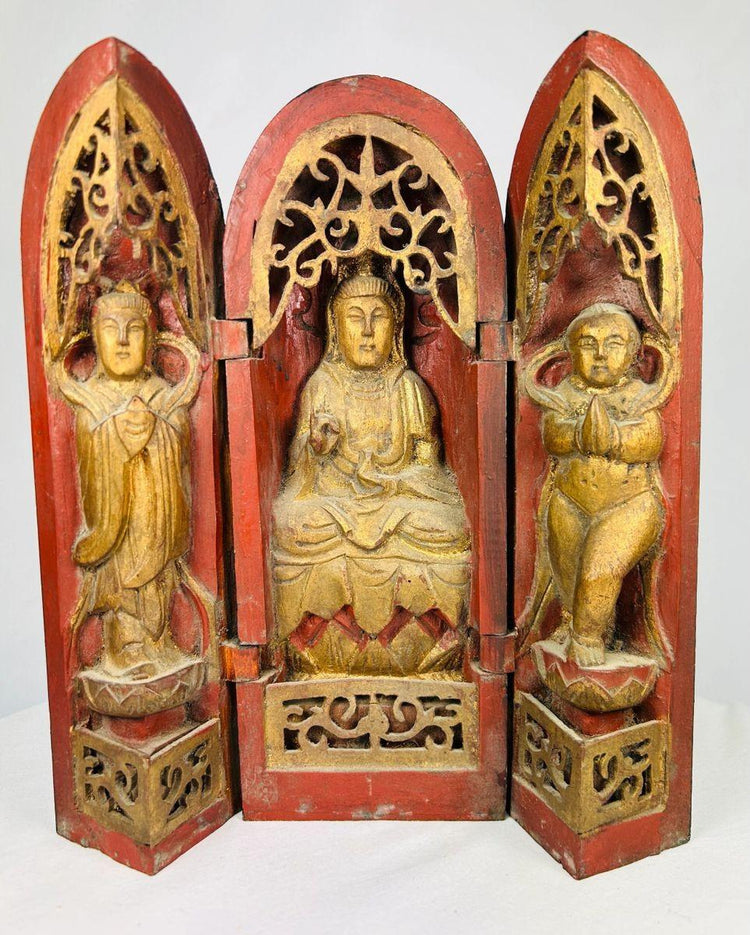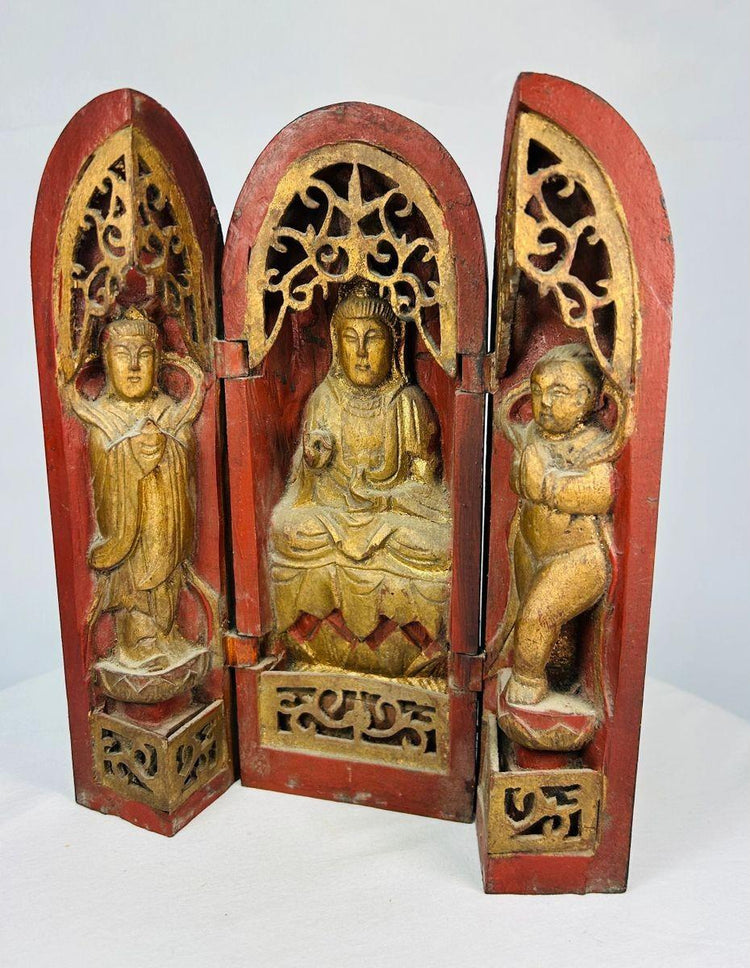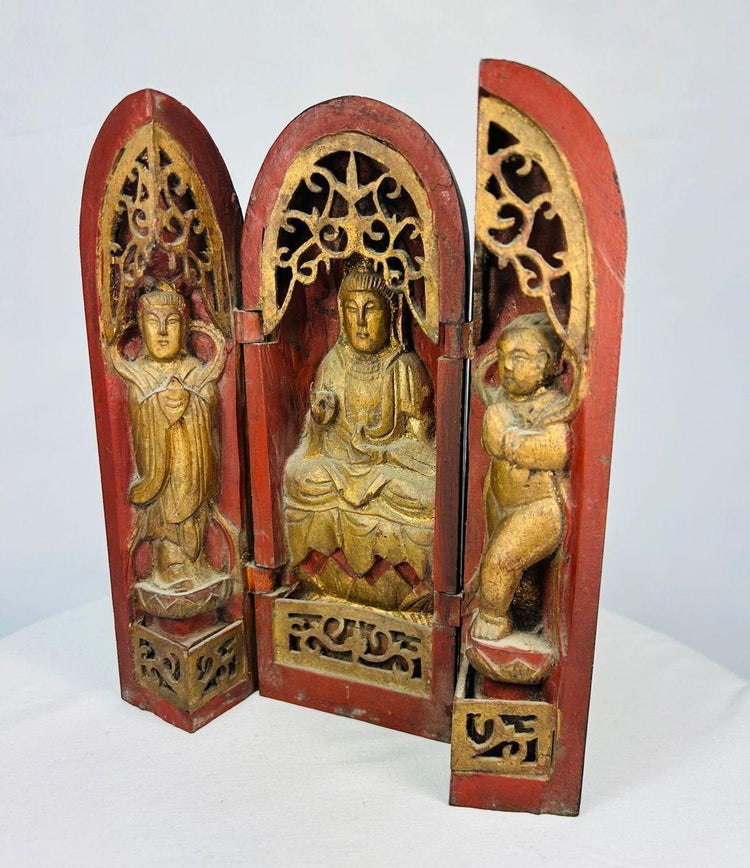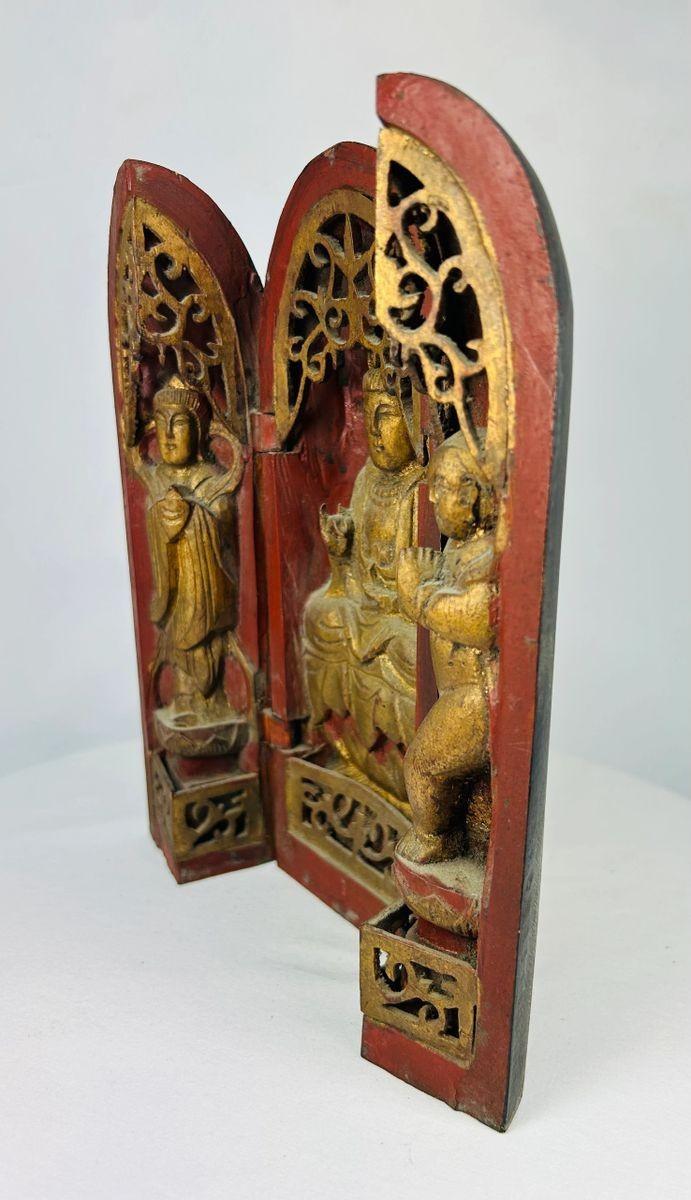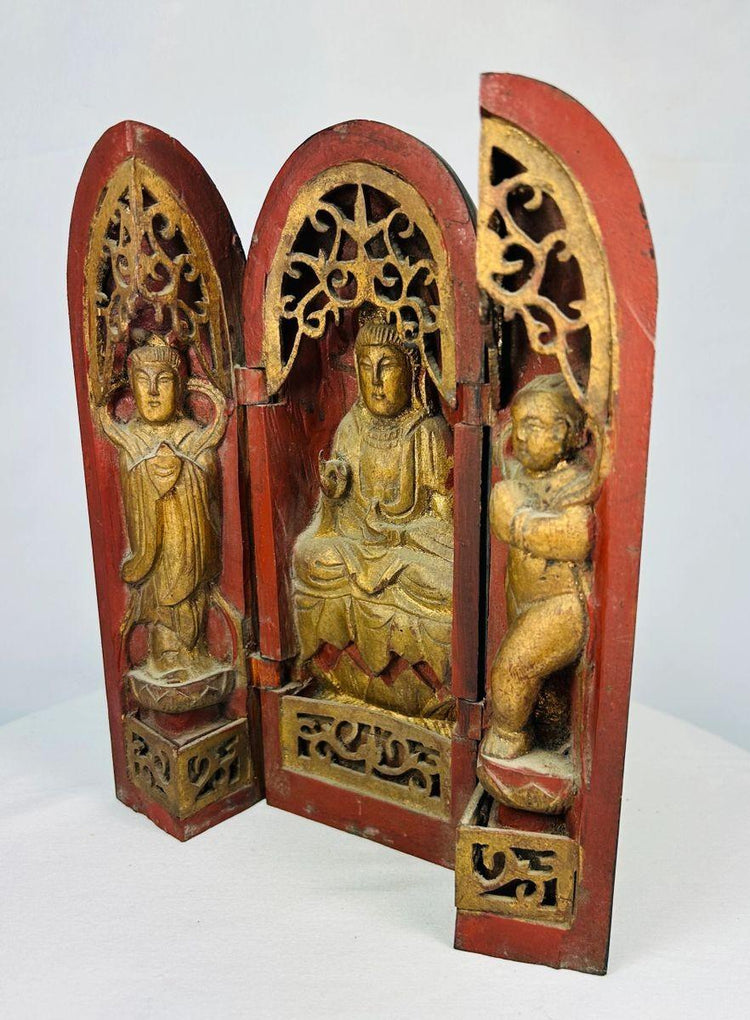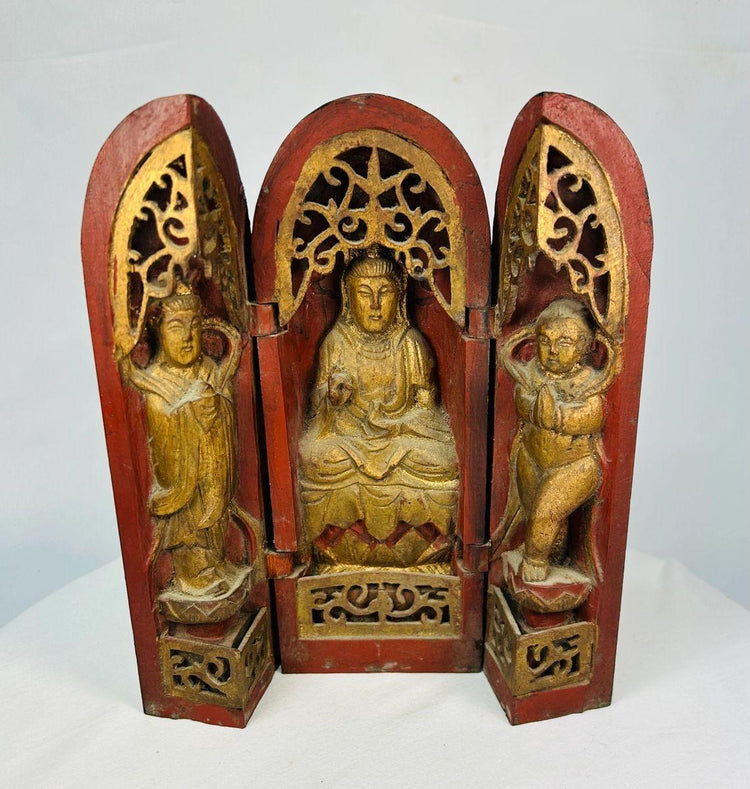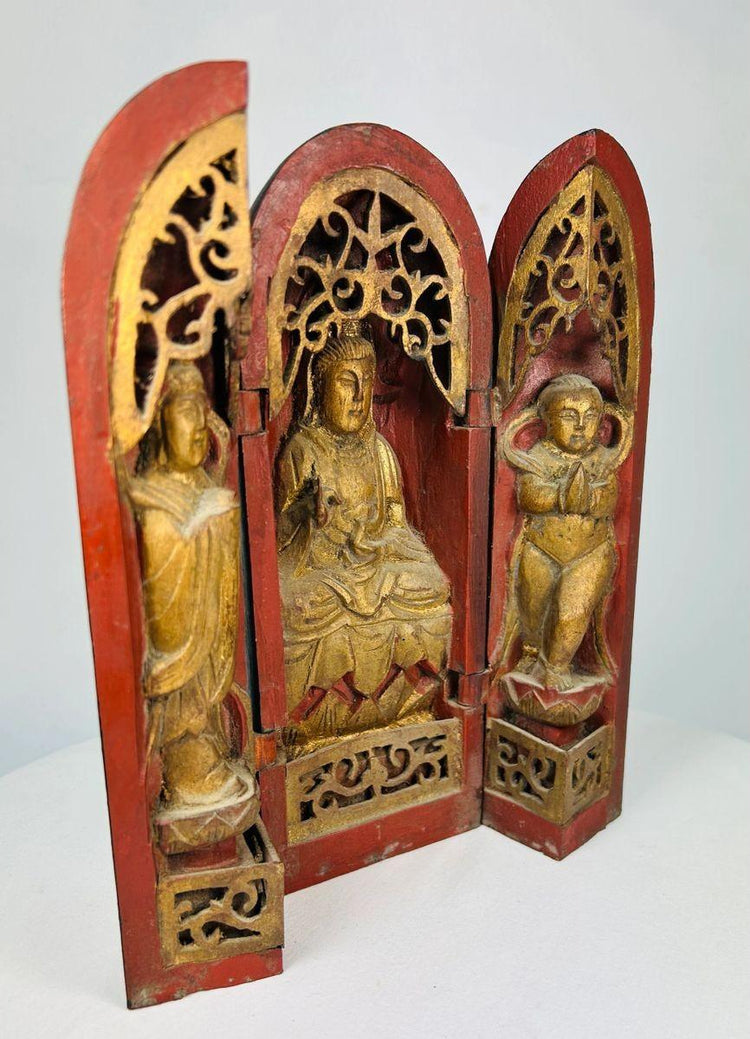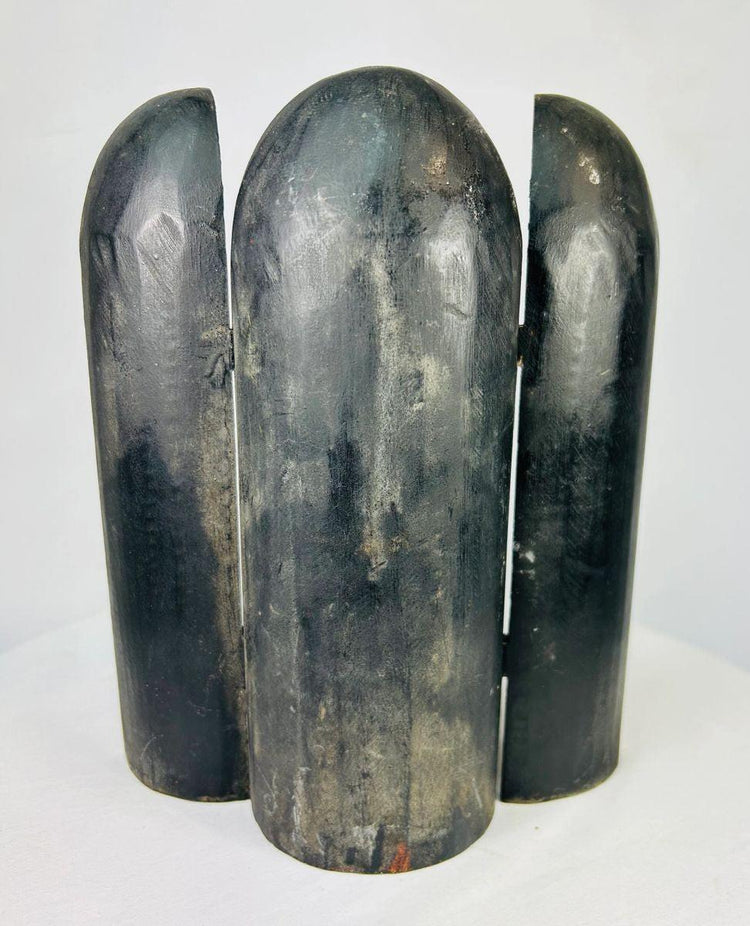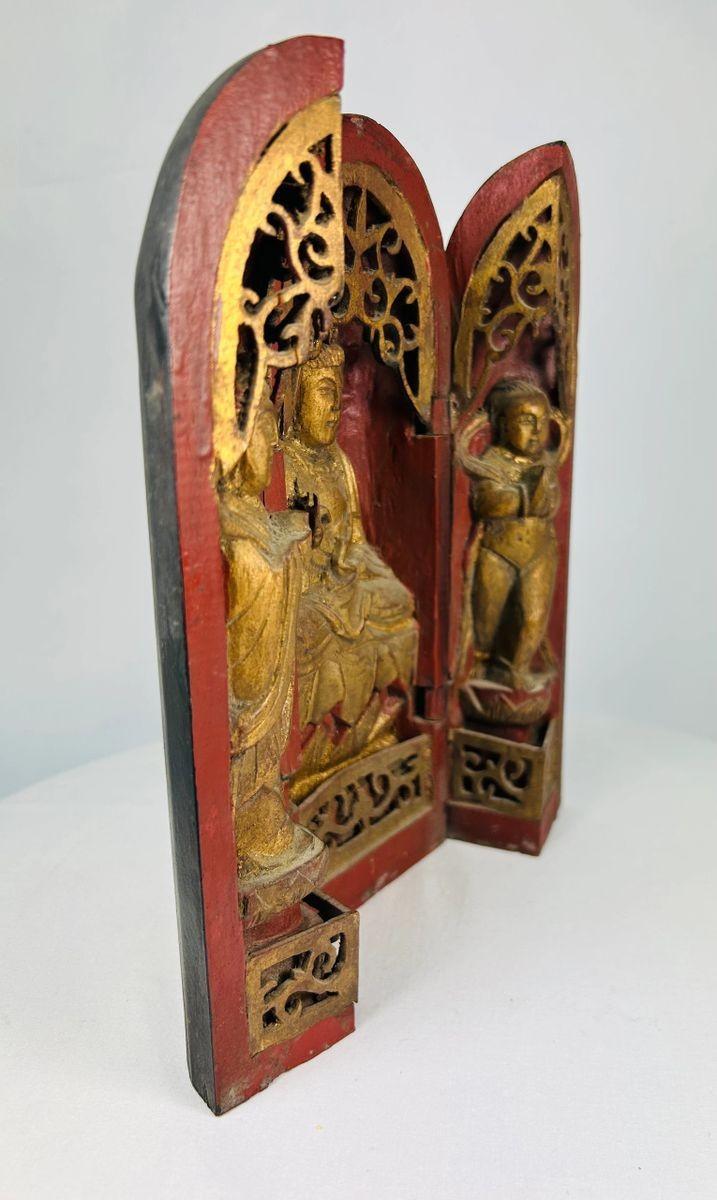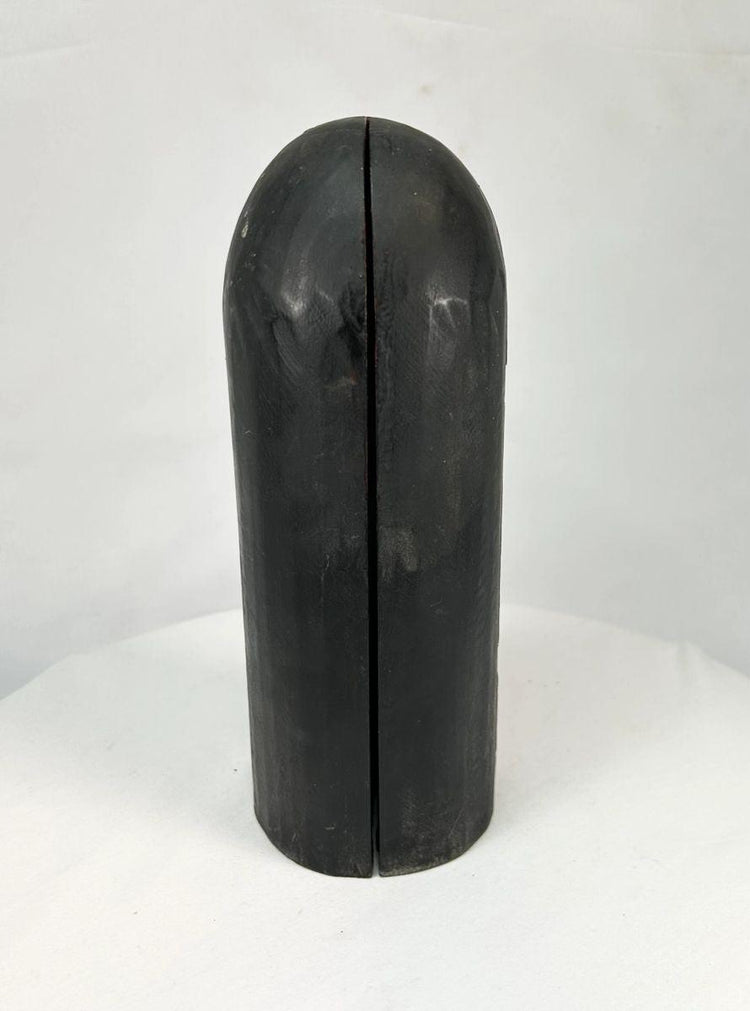Ancient Chinese Qing Dynasty Portable Buddhist Shrine | Circa 18th-19th Century
Description
More
Less
Historical Context & Origin
Region: China
Material: Hand-carved wood with lacquer and gilding
Period: Qing Dynasty (18th–19th Century)
Description
This finely crafted Qing Dynasty portable shrine served as a personal Buddhist altar, reflecting the flourishing religious art and devotional practices of the era. Designed for monks, travelers, and nobility, it provided a sacred space for prayer and meditation wherever one journeyed. The central figure, likely Guanyin or the Buddha, is flanked by two attendants, embodying protection, compassion, and guidance. The triptych form allows the shrine to be folded shut for safe transport, while intricate floral carvings and gilded latticework add both elegance and spiritual symbolism. Its rich patina, aged lacquer, and traces of gold leaf highlight centuries of reverence and devotional use.
Features
- Central figure (Guanyin or Buddha) flanked by two attendants
- Hand-carved wooden triptych with folding panels for portability
- Intricate floral motifs and openwork with original lacquer and gilding
- Rich patina from centuries of age and devotional use
- Compact yet detailed form designed for private prayer and meditation
Cultural Significance
Portable shrines like this were essential in Qing Dynasty devotional life, serving as intimate spaces for worship, offerings, and meditation rituals. Beyond their functional role, they symbolized blessings, guidance, and protection for their owners. Such shrines are now scarce, making surviving examples highly prized by collectors, scholars, and spiritual practitioners alike.
Condition
The shrine displays natural wear consistent with age, including surface patina and fading of lacquer and gilding. Despite centuries of use, the folding doors and hinges remain functional, and the original paint and structure are well-preserved. The minimal restoration enhances authenticity while ensuring stability.
Dimensions (approximate)
Height: 9 in
Age
200–300 years old
Description
Historical Context & Origin
Region: China
Material: Hand-carved wood with lacquer and gilding
Period: Qing Dynasty (18th–19th Century)
Description
This finely crafted Qing Dynasty portable shrine served as a personal Buddhist altar, reflecting the flourishing religious art and devotional practices of the era. Designed for monks, travelers, and nobility, it provided a sacred space for prayer and meditation wherever one journeyed. The central figure, likely Guanyin or the Buddha, is flanked by two attendants, embodying protection, compassion, and guidance. The triptych form allows the shrine to be folded shut for safe transport, while intricate floral carvings and gilded latticework add both elegance and spiritual symbolism. Its rich patina, aged lacquer, and traces of gold leaf highlight centuries of reverence and devotional use.
Features
- Central figure (Guanyin or Buddha) flanked by two attendants
- Hand-carved wooden triptych with folding panels for portability
- Intricate floral motifs and openwork with original lacquer and gilding
- Rich patina from centuries of age and devotional use
- Compact yet detailed form designed for private prayer and meditation
Cultural Significance
Portable shrines like this were essential in Qing Dynasty devotional life, serving as intimate spaces for worship, offerings, and meditation rituals. Beyond their functional role, they symbolized blessings, guidance, and protection for their owners. Such shrines are now scarce, making surviving examples highly prized by collectors, scholars, and spiritual practitioners alike.
Condition
The shrine displays natural wear consistent with age, including surface patina and fading of lacquer and gilding. Despite centuries of use, the folding doors and hinges remain functional, and the original paint and structure are well-preserved. The minimal restoration enhances authenticity while ensuring stability.
Dimensions (approximate)
Height: 9 in
Age
200–300 years old
You May Also Like




























